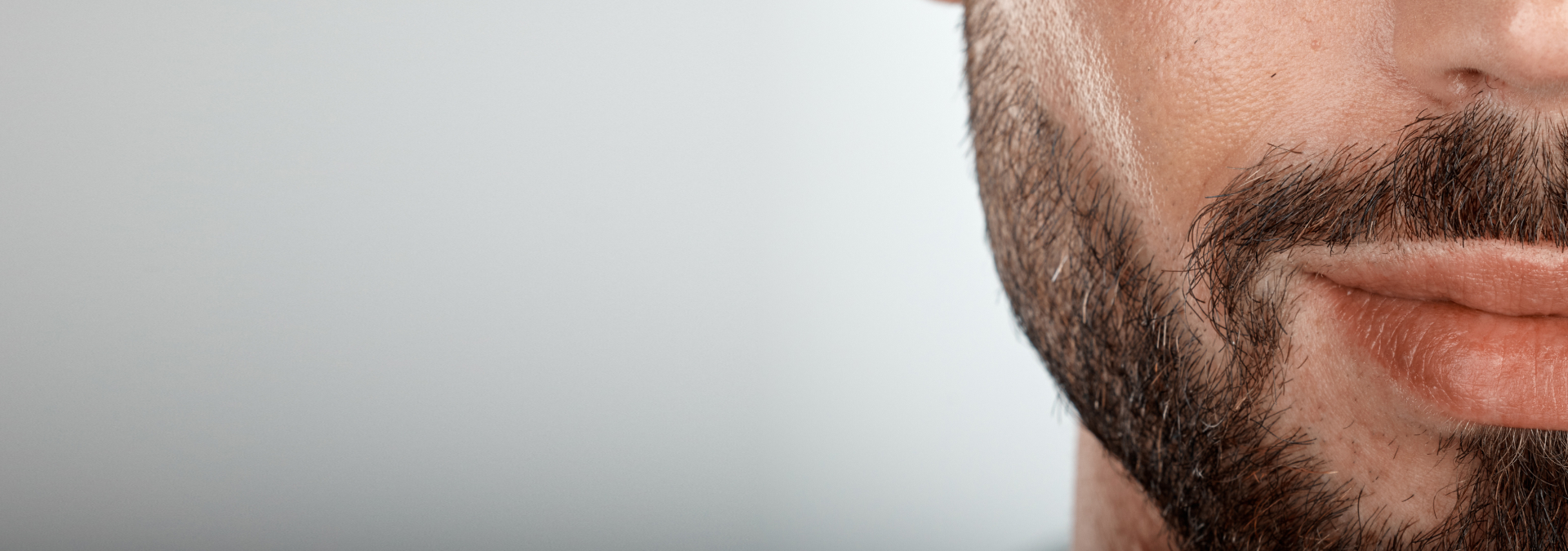
FUE Beard Hair Transplantation
Beard hair transplantation is a proven method of improving beard growth and correcting patchy or completely missing beard areas. Beard hair can be transplanted in two different ways: Follicular Unit Extraction (FUE) and Direct Hair Implantation (DHI).
No stitches, no scarring - just uniformly beautiful results. The implanted facial hair can be shaved, trimmed and groomed as usual, or it can continue to grow naturally.
FUE Beard Hair Transplantation
Frequently Asked Questions
FUE or DHI Beard transplantation is an effective method of correcting beard growth. It involves filling in thinning or bald areas of the beard: Hair follicles are taken from the back of the head, carefully prepared and then precisely placed in the desired areas of the beard. Each hair is angled with precision to achieve a natural look.
Both methods can be useful for men who want a fuller, more even beard contour or who have patchy beard growth due to genetic factors, scars or skin conditions.
Failure to grow a beard can be caused by various factors, ranging from genetic influences to hormonal and health conditions:
Genetic Predisposition: Genetics are often the primary cause. If many men in a family have sparse beard growth, this trait may be passed down to other family members.
Hormonal Influences: Beard growth is strongly influenced by the male hormone testosterone and its byproduct, dihydrotestosterone (DHT). If hair follicles are overly sensitive to DHT, this can hinder growth or result in a thinner beard.
Age: Beard growth often doesn’t reach its full potential until men are in their 20s or 30s. Younger men may experience uneven or sparse beard coverage that fills in over time.
Diet and Lifestyle: Factors like an unbalanced diet, stress, inadequate sleep, or smoking can affect beard growth by reducing the nutrient supply to hair roots, weakening growth.
Recovery After FUE Beard Hair Transplantation
Frequently Asked Questions
Please refrain from engaging in any sports activities, including running, cycling, football, golf, and basketball, for at least 1 month after the procedure. Additionally, avoid heavy lifting, intense workouts, and sweat-inducing training for 2 months. Activities such as sauna, sunbathing, and solarium should be avoided for 3 months, as high temperatures and humidity can negatively impact healing.
Most importantly, avoiding any impact to your head in the early stages is crucial, which is why sports and physical activities should not be resumed too soon.
 +90 532 474 04 07
+90 532 474 04 07
